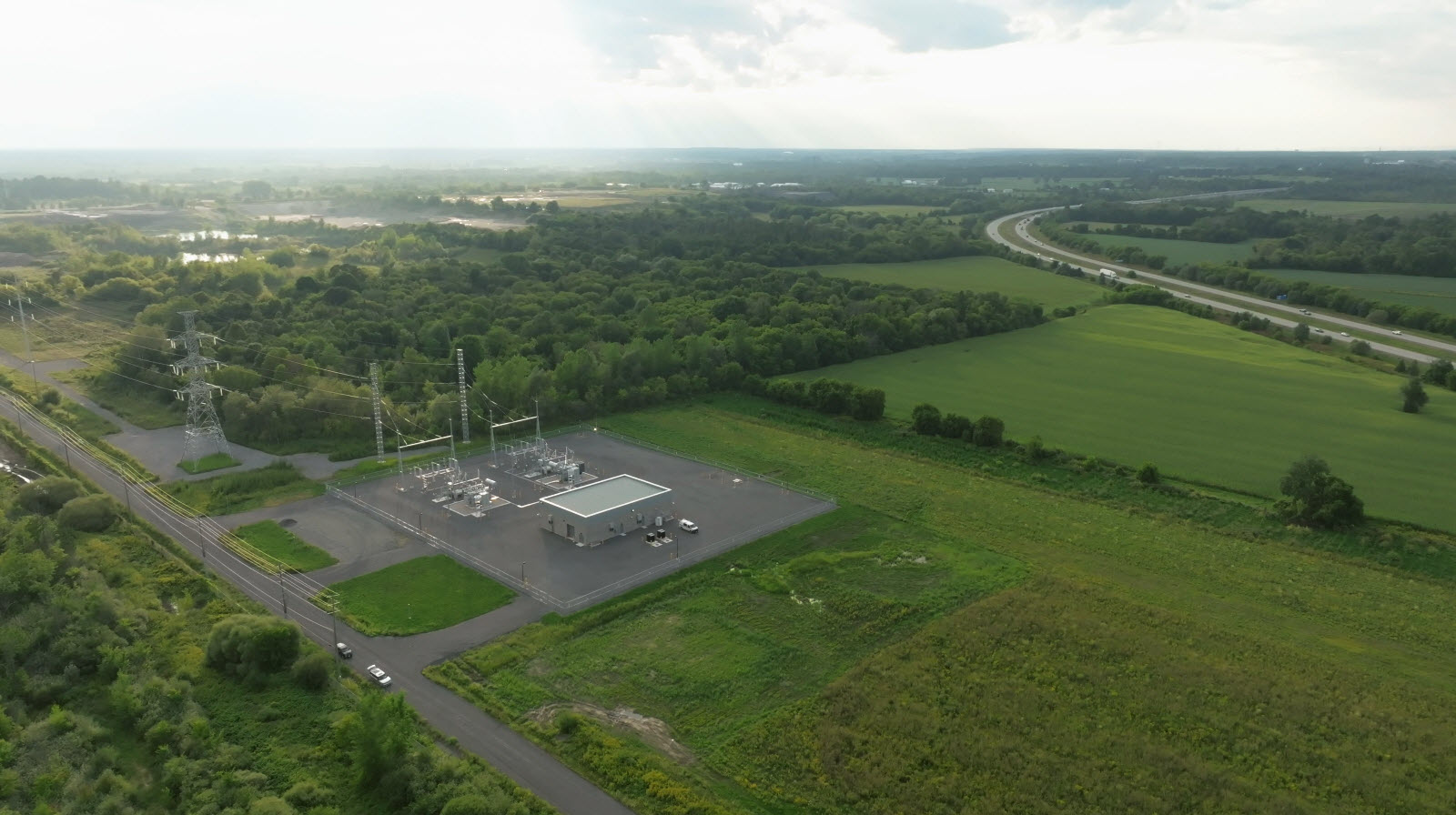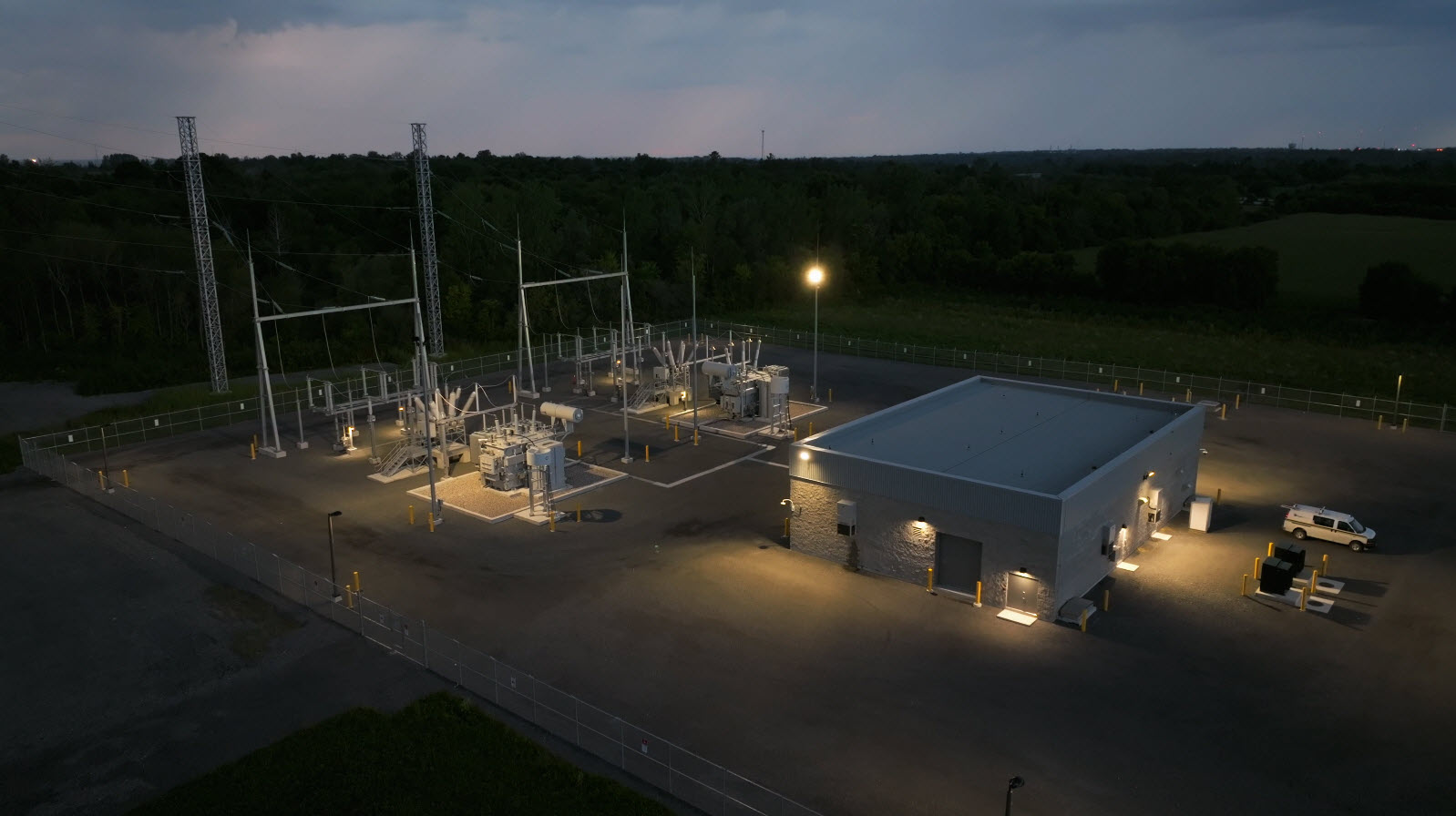Taking a walkabout at our new 15-acre pollinator meadow in south Nepean, the sweet sounds of birds chirping and bees buzzing are all but drowned out by the roar and racket of transport trucks zooming along Highway 416 only a few hundred feet away.
And, believe it or not, that’s exactly why this site was selected.
When it comes to pollinator habitats, it’s all about location, location, location. Utility corridors, properties with electrical substations, road right-of-ways, and other public spaces, are becoming important and sought-after settings for the creation of habitats designed to attract local pollinator species.
For native bees, flies, moths, butterflies, beetles and hummingbirds, this new meadow adjacent to a provincial highway is an idyllic spot to gather nectar and pollen from carefully curated native plants and wildflowers. While only planted in the spring of 2021, in another year or two, the selection will be even more bountiful.
“It’s one of the largest pollinator meadows in eastern Ontario,” says Tracey Etwell, a Restoration Ecologist at the Canadian Wildlife Federation. “Utilities like Hydro Ottawa are key players in our pollinator restoration efforts because they maintain more than 160,000 kilometres of overhead lines. Since these lines have to be maintained through the periodic removal of woody material, the resulting flower meadows provide abundant nectar and pollen resources.”
The meadow was created at the site of our newest municipal transformer station in south Nepean with the help of our partners, the Canadian Wildlife Federation, the City of Ottawa and the Rideau Valley Conservation Authority.
It’s taken six years and more than 23,000 work hours, but our largest and most buzzworthy Cambrian municipal transformer station was energized in April 2022, on schedule and below its approved budget. With 90 megawatts of capacity, equivalent to powering nearly 32,000 single homes annually, the station will provide a second source of supply to the area; relieving stress on existing facilities that were operating near capacity.
The station, located in south Nepean, just west of Highway 416, was originally identified by Hydro Ottawa in a 2008 business case due to the substantial growth occurring in areas like Barrhaven and Nepean. In fact, electricity needs in south Nepean have doubled since 2002, and are expected to more than double again over the next 20 years.
Once the project was approved by the Independent Electricity System Operator in 2016, Hydro Ottawa and Hydro One held multiple community open houses and met with landowners, elected officials, municipal representatives, government agencies and Indigenous communities over a span of three years. Only after a Class Environmental Assessment was completed, including environmental wildlife and habitat surveys, Species-at-Risk surveys, and archeological and heritage assessments (among others), did the station break ground in 2019.
Three years later, the station is humming and buzzing along, keeping the lights on in the south end of the city.
“We want to power our communities and look for ways to do so sustainably and in a manner that minimizes our impact on the local environment,” says Guilaume Paradis, Chief Electricity Distribution Officer. “As an organization, we want to develop our infrastructure so that it supports and protects the environment in which we operate so that the future remains bright, clean and sustainable for many generations to come.”
Substations like Cambrian can last 50 years or more, guaranteeing that south Nepean will have an abundance of power to grow for decades.
In addition to the new station, the project required a connection line to Hydro One’s provincial transmission system. More than 12 kilometres of Hydro One’s 115 kilovolt transmission line had to be rebuilt at double the capacity to 230 kilovolts. This meant building taller steel transmission towers and stringing a conductor across Highway 416, forcing the provincial highway to close so the work could be completed safely.
Meaghan McDonald, Lake Planning and Shoreline Stewardship Coordinator with the Rideau Valley Conservation Authority worked with us and Hydro One to plant a four-acre, 2,750 tree reforestation area on the site in 2020. “The trees form a bit of a wind barrier between the highway and the meadow,” says McDonald. “We’ll manage the tree planting and pollinator site so that invasive species like Wild Parsnip and Manitoba Maple seedlings don’t move in, and we’ll do spot checks to see how the native plants are coming along and at what rates they grow.”
Thanks to initiatives like the pollinator meadow, we’re making sure the deep connections that exist between our work and our impact on the environment are considered in all of our decision-making practices. By factoring climate change into every new project or initiative, we are recognizing the role we have to play in protecting the environment, powering our future responsibly, and supporting our city’s green initiatives and targets.
When it comes to location, location, location, we ensure every neighbourhood in Ottawa has safe and reliable electricity. It’s a responsibility we take seriously and continuously plan for. It’s why we regularly evaluate, replace, upgrade and build equipment and infrastructure across our entire electrical distribution system, whether near the downtown core or in our more rural areas.
As we evaluate and monitor the progress of our pollinator meadow project, we’ll be looking at possibly implementing more throughout the city at our various operations and work sites. We think it’s the bee-ginning of something bee-autiful.
Want to build your own backyard pollinator habitat? Here are some tips from our friends at the Canadian Wildlife Federation and Rideau Valley Conservation Authority.
- Consider native plant species in your backyard gardening mix. Your local pollinators will love you for it.
- Support local nurseries. There are a few in Ottawa and the valley. If we support our local native nurseries, they’ll be able to continue supplying those types of plants for us.
- Don’t rake up all your leaves. Consider leaving them on your lawn and garden in the fall. Many pollinators use these habitats to protect themselves over the winter.
- In the spring, resist mowing those dandelions until more spring flowers bloom. Dandelions are one of the first floral resources available to pollinators, and spring is the hardest season for them because there is so little for them to feed on.
- Add clover to your garden. It’s a great resource for pollinators.
- Visit the Canadian Wildlife Federation and Rideau Valley Conservation Authority websites for webinars and other online guides to help you.
For more of our in-depth conversation with Tracey Etwell and Meaghan McDonald, listen to our ThinkEnergy podcast episode.





